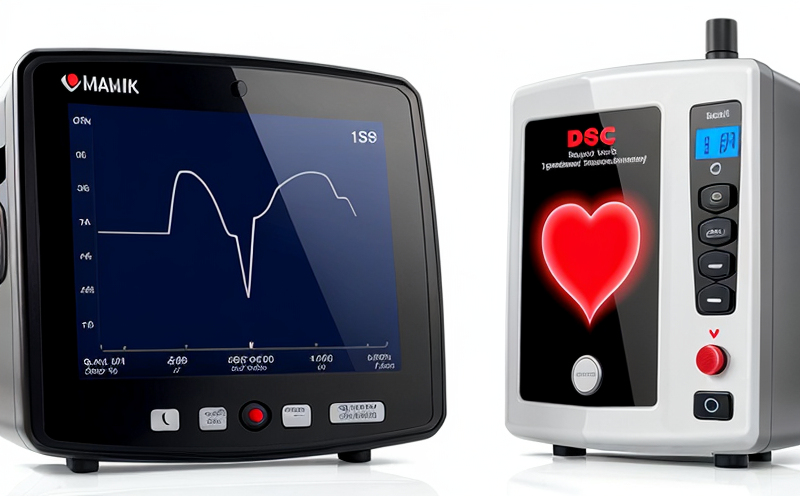ISO 14708-2 Pacemaker Device Performance Testing
The ISO 14708 series of standards provides comprehensive guidelines for the testing and evaluation of cardiac and cardiovascular medical devices. Specifically, ISO 14708-2:2013, titled "Medical Devices — Cardiac Pacing Systems and Accessories — Part 2: Performance Tests," focuses on ensuring that pacemakers meet stringent performance criteria to guarantee safe and effective operation in clinical settings.
The primary objective of this testing protocol is to assess the functional integrity, reliability, and safety aspects of a pacemaker. It encompasses various tests designed to evaluate critical parameters such as pacing threshold, sensing sensitivity, escape interval, battery life, and other operational characteristics that are crucial for device performance. These tests not only ensure regulatory compliance but also enhance patient care by reducing the risk of adverse events.
The testing process involves rigorous simulation of real-world conditions under which pacemakers operate. For instance, the pacing threshold test measures the minimum stimulus voltage required to elicit a response from the heart, while the sensing sensitivity test evaluates how well the device can detect electrical signals generated by the heart itself. The escape interval test ensures that the device does not deliver excessive stimuli and maintains proper timing between consecutive pulses.
Another key aspect of this testing is battery life evaluation. Pacemaker batteries are critical components that must last long enough to ensure continuous care without requiring frequent replacements, which can be invasive for patients. Testing involves monitoring the battery's performance under various stress conditions to predict its longevity accurately.
The standard also addresses other important areas like electromagnetic interference (EMI) resistance and interoperability with other medical devices. EMI testing ensures that pacemakers function correctly even in environments where they may be exposed to external electromagnetic fields, which is particularly relevant in modern healthcare settings.
Given the complexity of cardiac pacing systems, thorough validation through ISO 14708-2 testing is essential for manufacturers and clinicians alike. This protocol not only helps in identifying potential design flaws early but also aids in continuous improvement by providing detailed insights into device performance under diverse operational scenarios.
Industry Applications
The ISO 14708-2 standard finds extensive application across the medical device industry, particularly within the cardiac and cardiovascular sectors. Manufacturers of pacemakers rely on this testing protocol to ensure their devices meet rigorous quality standards before they are approved for clinical use.
| Application Area | Description |
|---|---|
| Pacemaker Design and Development | Initial design validation, ensuring the device functions as intended under specified conditions. |
| Manufacturing Quality Assurance | Continuous production line monitoring to maintain consistent product quality. |
Additionally, clinical research institutions and regulatory bodies use this standard for evaluating new pacemaker technologies and conducting post-market surveillance. The protocol's comprehensiveness ensures that all potential issues are addressed before devices reach the market or during their lifecycle in healthcare settings.
Why Choose This Test?
- Precision and Accuracy: The ISO 14708-2 protocol uses precise measurement techniques to assess critical device parameters, ensuring accurate results.
- Regulatory Compliance: Compliance with this standard is mandatory for pacemaker manufacturers seeking regulatory approvals in many countries around the world.
- Informed Decision-Making: The detailed test reports provide comprehensive data that aids manufacturers in making informed decisions about product improvements and clinical applications.
- Patient Safety: By adhering to these stringent testing protocols, manufacturers can ensure pacemakers are safe and effective for patients, reducing the risk of adverse events.
Customer Impact and Satisfaction
- Enhanced Patient Care: Devices that pass ISO 14708-2 testing are more reliable, reducing the likelihood of device failures or malfunctions.
- Increased Trust: Compliance with this standard builds trust between manufacturers and healthcare providers, ensuring consistent quality.
- Improved Productivity: By eliminating substandard products early in the manufacturing process, ISO 14708-2 helps maintain high levels of productivity without compromising on quality.
The rigorous testing under this protocol ensures that pacemakers are dependable and meet the highest standards of performance. This not only enhances patient safety but also contributes to better overall healthcare outcomes. Manufacturers who follow these guidelines can expect higher customer satisfaction, leading to increased market share and loyalty.





